Exploring the Diverse World of Meteorites


Intro
Meteorites have captivated human imagination for centuries. These remnants of the cosmos not only hold secrets about the universe but also offer insights into our planet's history. Collectors, scientists, and enthusiasts all share a common interest in understanding the different types of meteorites, their composition, and their origins.
This article provides an in-depth exploration of various meteorites, particularly focusing on stony, iron, and stony-iron types. Each type has its unique characteristics and significance. By comprehending these categories, enthusiasts and collectors can better appreciate their specimens and understand the broader context of geology and palæontology.
Featured Collectible of the Month
Overview
This month, we shine a light on the Allende meteorite, a well-known stony meteorite that fell in Mexico in 1969. Rich in chondrules and organic compounds, Allende has become highly sought after by collectors and researchers alike. The meteorite has a unique texture, with its chondrules varying in size and color. This variability adds an aesthetic quality, making it a remarkable piece for any collection.
Historical Significance
The Allende meteorite stands out not only for its beauty but also for its contribution to science. After its fall, it was the first meteorite to be studied in-depth with modern analytical techniques. Its age has been dated at approximately 4.6 billion years, making it one of the oldest known materials, offering a glimpse into the early solar system's formation. Moreover, the discovery of amino acids in the meteorite sparked interest in the origins of life, linking cosmic materials to biological processes on Earth.
Identification Techniques
Visual Characteristics
Identifying meteorites can be challenging. However, several key visual characteristics can help in the process:
- Fusion crust: A thin layer that forms on the surface during atmospheric entry.
- Magnetism: Iron-rich meteorites often attract magnets, distinguishing them from terrestrial rocks.
- Chondrules: These round inclusions found in stony meteorites often indicate their age and formation process.
Resources for Identification
Correct identification is crucial in the world of meteorites. Here are some valuable resources for enthusiasts:
- Wikipedia - Meteorites
- Britannica - Meteorites
- Reddit - Meteorite Collecting
- Facebook - Meteorite Collectors
"Understanding the types of meteorites enriches the appreciation of these celestial objects, turning mere collections into a rich narrative of cosmic history."
Foreword to Meteorites
Meteorites captivate more than just scientists; they engage collectors and enthusiasts from all walks of life. Understanding meteorites is essential not only for mineralogy but also for grasping the broader mechanisms of our solar system and universe. This section serves as a foundation, defining meteorites and emphasizing their significance. It establishes the tone for the subsequent exploration of various types of meteorites, underscoring their scientific and historical importance.
Definition and Significance
A meteorite is a solid fragment of a meteoroid that survives its fiery passage through the Earth's atmosphere and lands on the planet’s surface. The importance of meteorites lies in their ability to provide insights into celestial bodies, their formation, and the fundamental processes governing their evolution. These remnants of the cosmos have become crucial for research in geology, astronomy, and planetary science.
The significance of meteorites extends to various domains. For researchers, they act as time capsules that harbor clues about the early solar system. For collectors, meteorites represent a rare and tangible connection to the sky. Each piece is unique, with its own history and composition, making it a treasure to be cherished.
Historical Context
The fascination with meteorites is not new. Historical records indicate that meteorites have been observed and documented for millennia. Ancient cultures interpreted meteor falls as omens or messages from the gods. In the early 19th century, scientists began to categorize meteorites systematically, laying the groundwork for modern classifications and studies. The falling of the meteorite in Siberia in 1908, known as the Tunguska event, further spurred interest and research on these celestial objects.
Understanding the historical context of meteorites enhances appreciation for their complexity. The transition from folklore to scientific scrutiny illustrates humanity's quest for knowledge about the universe. Today, meteorites continue to reveal new insights, fueled by ongoing research and exploration.
"Meteorites are the breadcrumbs of the universe, leading us back to the origins of our solar system."
In summary, recognizing the definition and historical context sets the stage for the exploration of meteorites. The subsequent sections will delve deeper into the different types of meteorites, their classifications, and implications for science and collection.
Classification of Meteorites
The classification of meteorites serves as a fundamental framework in the study of these celestial objects. It allows scientists and collectors alike to comprehend the intricate nature of meteorites by categorizing them based on their origins and chemical compositions. This classification aids in understanding their formation processes, age, and potential for contributing to the broader knowledge of planetary bodies. For enthusiasts, recognizing the different types of meteorites can greatly enhance their collecting experience.
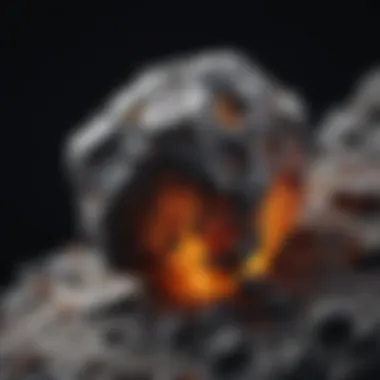
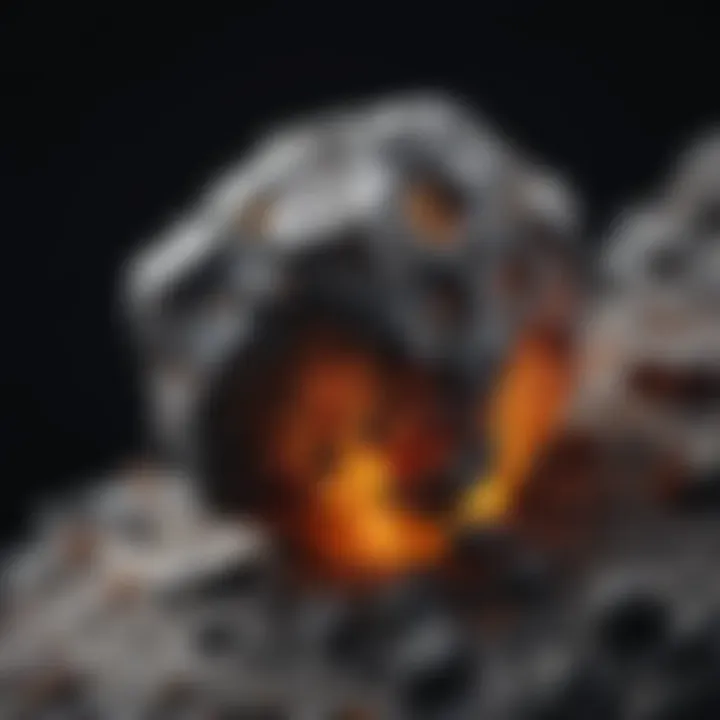
Overview of Classification Systems
Meteorites are primarily classified into three main categories: stony meteorites, iron meteorites, and stony-iron meteorites. Each category has subtypes that further specify their characteristics. Stony meteorites, the most abundant, are divided into chondrites and achondrites, among others. Iron meteorites can be grouped into types based on their nickel-iron alloy structures, such as Group IIC and Group IIAB. Stony-iron meteorites, combining properties of both stone and iron, include pallasites and mesosiderites.
This classification system is not merely academic; it is rooted in practical considerations. Meteorites can be analyzed through their mineral compositions, isotopic signatures, and physical properties. Thus, there are specific systems, such as the Meteoritical Society's classification for naming and cataloging meteorites globally. The utility of these classifications means researchers can compare findings across different studies, facilitating deeper insights into meteorite origins and their implications for planetary science.
Importance of Classification in Collecting
For rock and fossil collectors, understanding meteorite classifications is vital for several reasons. Firstly, it informs purchasing decisions. Knowledge of classification can help collectors identify rare or valuable specimens, thereby enhancing their collections with scientifically significant pieces.
Secondly, knowing how to classify meteorites aids in their preservation. Proper classification often dictates how specimens should be stored and maintained. Certain meteorites need specific environmental conditions to prevent degradation.
Lastly, classification fosters a sense of community among collectors and scholars. Discussions around the unique traits of each category inspire collaborations, as collectors can share insights and experiences based on specific meteorite families.
"Systematic classification not only enriches our understanding but inspires deeper relationships between collectors and the scientific community."
In short, the classification of meteorites enriches both scientific endeavors and personal collections, forging connections between the cosmos and individual curiosity.
Stony Meteorites
Stony meteorites hold a significant place within the classification of meteorites. These celestial remnants provide essential insights into the early formation and evolution of the solar system. Composed mainly of silicate minerals, stony meteorites serve not only as a bridge to the understanding of planetary bodies but also attract collectors due to their varied appearance and composition. Their intricate characteristics can yield valuable information about planetary processes, making them crucial for both scientific discourse and practical collection pursuits.
Characteristics and Composition
Stony meteorites are primarily characterized by their silicate minerals. They offer a diverse array of textures, from coarse-grained to fine-grained, depending on their formation conditions. Most stony meteorites are found to be either predominantly composed of olivine and pyroxene or other silicate minerals. The chemical composition can also vary widely. This variability is key to their study as it provides insight into the conditions present during their formation. Understanding these characteristics can enhance the knowledge about not only the meteorites themselves but also the histories of their parent bodies.
Subtypes of Stony Meteorites
Stony meteorites are further divided into distinct subtypes. Each type has unique features and contributions to the field of planetary science.
Chondrites
Chondrites are perhaps the most primitive and abundant type among stony meteorites. They contain small, round particles called chondrules, which formed in the solar nebula before the planets. This characteristic makes them invaluable for understanding solar system history. Their abundance and simple composition allow for easier study. They are often a popular choice among collectors due to their relatively low cost and rich variety. However, the challenge lies in distinguishing them from other meteorite types, as some share similar features.
Achondrites
Unlike chondrites, achondrites do not contain chondrules. Instead, they represent differentiated bodies, having undergone processes that changed their original structure. This characteristic offers a snapshot of more evolved planetary processes. The absence of chondrules makes achondrites slightly more complex in terms of identification, which can be seen as an advantage for serious collectors. These meteorites provide a crucial perspective on how planetary bodies develop once they form.
Rumley Chondrites
Rumley chondrites are a specific subtype recognized for their unique characteristics. They are generally characterized by specific mineral compositions that help in their classification. Rumley chondrites contribute additional diversity within the chondrite group. Their specific mineral content offers insights into the processes occurring in the early solar system. Collectors often appreciate them for their uniqueness and rarity, which enhances their value in collections.
Notable Examples
In the realm of stony meteorites, notable examples such as the Allende meteorite stand out. The Allende meteorite is classified as a carbonaceous chondrite. This meteorite is famous for containing a variety of organic compounds and presolar grains, offering a window into the conditions that existed before solar system formation. Other significant examples include the Murchison meteorite, which also contains complex organic molecules.
By studying such examples, researchers can further comprehend the genesis of planetesimals and the materials that ultimately led to the formation of planets. Collectors value these meteorites not just for their aesthetic qualities, but for the stories they can reveal about our universe.
Iron Meteorites
Iron meteorites play a crucial role in the study of celestial materials, representing a distinct category distinguished by their metal composition. Their significance lies in their ability to provide insights into the early solar system and planetary formation processes. The majority of these meteorites originate from the cores of differentiated asteroids, giving us vital information about the conditions that existed during the formation of our solar system. Moreover, they have a unique appeal for collectors due to their aesthetic qualities and rarity.
Physical Properties
Iron meteorites are primarily composed of iron and nickel alloys, which results in several defining physical properties. They typically have a high density, making them heavier than stony meteorites. When sliced, their cross-sections exhibit a Widmanstätten pattern—a unique crystalline structure that occurs due to the slow cooling of the metal. This visual feature not only increases their appeal to collectors but also serves as a diagnostic criterion for identifying them. Their metallic luster and resilience to corrosion when properly treated add to their desirability among rock and fossil collectors.
Subtypes of Iron Meteorites
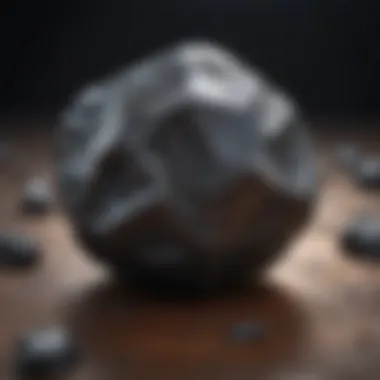
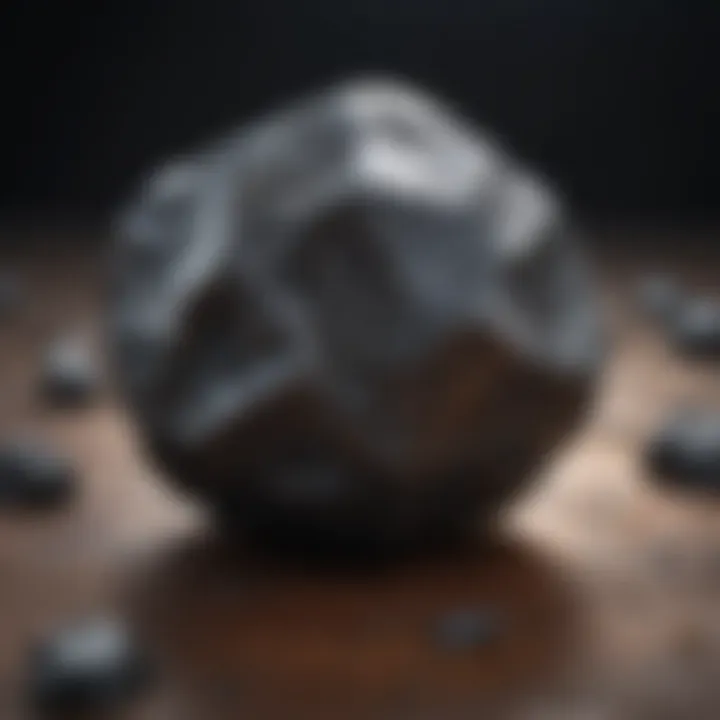
Iron meteorites are categorized into various groups based on their structural and chemical characteristics. Understanding these subtypes enhances the knowledge of their origins and their significance in the solar system's evolution.
Group
Group IIC meteorites are particularly noted for their distinct structural features. They are characterized by a relatively high nickel content, which can go up to 20%. This composition gives them exceptional corrosion resistance and makes them popular among collectors and researchers alike. The unique feature of Group IIC is the presence of kamacite, a nickel-poor iron that forms under specific cooling conditions. However, their rarity can make them difficult to acquire for collectors, which could lead to less availability in the market.
Group IIAB
Group IIAB meteorites stand out due to their complex crystal structures and varied elemental compositions. They tend to have significant amounts of nickel and possess a characteristic crystallization pattern. This subgroup is especially valuable to researchers because it can provide important clues regarding the differentiation processes that occurred in their parent bodies. One notable advantage is their relatively widespread occurrence compared to other groups, making them more accessible to collectors, albeit still limited in numbers.
Group IIIAB
Group IIIAB meteorites are distinguished by their unique combination of different metals and their geological history. They often feature distinctive isotopic ratios that can shed light on solar system formation. This group holds particular interest for scientists studying the conditions that led to the formation of core structures in larger asteroids. A disadvantage, however, is their comparatively less appealing appearance for collectors, as their surface may not always exhibit the eye-catching patterns seen in other iron meteorites. Despite this, their scientific value is substantial.
Famous Iron Meteorites
Among the extensive catalog of iron meteorites, certain specimens have gained prominence due to their history, size, or research value. For example, the Hoba meteorite is the largest known meteorite on Earth, weighing more than 60 tons. Another notable specimen is the Sikhote-Alin meteorite, famous for its spectacular fall in Russia in 1947, which produced a large number of fragments. These famed meteorites serve as important reference points in the study of iron meteorites and continue to attract attention from researchers and collectors alike. Their stories enrich our understanding of planetary science and the materials that compose our universe.
"Understanding meteorites like these not only fuels our curiosity but also reveals the complex processes that shaped our planet and others within the solar system."
In summary, iron meteorites offer a wealth of knowledge and a tangible connection to the cosmos. From their physical characteristics to their classification, each element plays an integral role in advancing our understanding of planetary science.
Stony-Iron Meteorites
Stony-iron meteorites present a fascinating segment of meteoritics that combines the best characteristics of both stony and iron meteorites. These unique meteorites are distinguished by their dual composition of metal and silicate minerals. This duality not only reflects significant formation processes but also attracts collectors and scientists alike due to their intriguing properties and origins. In this section, we will delve into what defines stony-iron meteorites and explore their subtypes, with a focus on the implications for planetary science and geological studies.
Defining Features
Stony-iron meteorites encompass two primary components: $( extFe-Ni alloys)$ and $( extsilicate minerals)$. This blend results in a distinctive appearance, often characterized by a metallic sheen contrasted with the texture of rock. The interplay of metal and silicate provides valuable insights into the processes that shaped the early solar system. Unlike pure metal or rock meteorites, the stony-iron variety reveals a complex history, showcasing their role as remnants of differentiated bodies in space.
Types of Stony-Iron Meteorites
Stony-iron meteorites can be categorized mainly into two types: Pallasites and Mesosiderites. Each subtype boasts unique features that make them significant in both scientific research and collector interest.
Pallasites
Pallasites are notable for their striking olivine crystals embedded in a nickel-iron matrix. The crystalline structure of olivine not only adds to their aesthetic appeal but also makes them a popular choice among collectors due to their vibrant green hues and varied crystal sizes. Pallasites represent material from the mantle of differentiated asteroids, illuminating the processes of planetary formation and differentiation.
Despite their allure, Pallasites can sometimes be a challenge to analyze due to the delicate nature of the olivine. Careful preservation and maintenance are essential to prevent degradation over time. However, their beauty and scientific significance far outweigh these challenges, maintaining their status as highly sought-after specimens in the meteorite community.
Mesosiderites
Mesosiderites consist of a more complex mixture of silicate minerals and metal, reflecting a history of impact mixing between the crust and mantle materials of their parent bodies. The diversity of mineralogy in mesosiderites makes them interesting for studies regarding planetary processes. With a more mottled appearance compared to Pallasites, these meteorites can reveal information about differentiation and collisional events in the asteroid belt. However, their fragmented nature may complicate classification and study, yet their complex histories provide an avenue for new research.
Significance in Research
The significance of stony-iron meteorites extends beyond mere collection. They serve as vital records of the early solar system, helping researchers understand the processes that led to planetary formation. By studying their structure and composition, scientists can gain insights into the conditions prevalent in the early universe and the evolution of our planetary system. The unique blend of silicate and metal in these meteorites allows for diverse analytical techniques, enhancing our understanding of both the meteorites themselves and the processes that created them.
"Stony-iron meteorites are a bridge between the rock-solid evidence of planetary formation and the metallic remnants of our cosmic heritage."
In essence, exploring stony-iron meteorites unlocks not only the past of our celestial neighborhood but also the methodologies employed in meteorite classification and understanding planetary bodies. Their study continues to evolve, reflecting changes in our approach to planetary science and collection methodologies.
Relevance to Planetary Science
Understanding meteorites plays a vital role in the field of planetary science. Meteorites are not just fragments from space; they represent the remnants of the early solar system. Their study provides important insights into the formation and evolution of planets. This section will discuss how meteorites connect to the broader themes of planetary formation, the conditions present in the early solar system, and their implications for understanding Earth's own history.
Meteorites and the Solar System
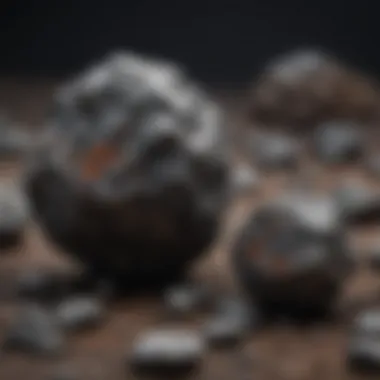
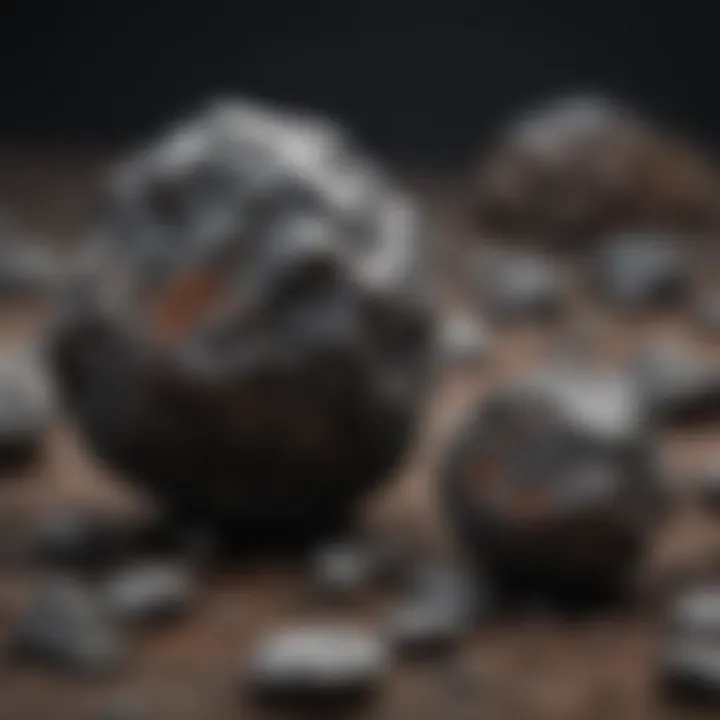
Meteorites come from asteroids, comets, and sometimes even the Moon or Mars. This diverse origin means they carry significant information about their parent bodies. When researchers analyze the isotopic ratios and elemental compositions of meteorites, they can infer details about the conditions and processes that occurred during the formation of the solar system. For instance, some meteorites may contain evidence of watery environments, suggesting the presence of liquid water in some celestial bodies, crucial for the evolution of life.
By examining these features, scientists can piece together a timeline of solar system formation, offering a glimpse into events such as accretion and differentiation. Moreover, studying the age of meteorites helps in calibrating the timeline of solar formation, providing context for the development of not only Earth but also other planets like Mars and Venus.
Insights into Formation Processes
Meteorites provide direct evidence of the processes that shaped the solar system. When categorized, each type of meteorite reveals distinct characteristics that reflect their formation conditions. For example, chondrites, which are the most primitive types of meteorites, contain tiny spherical structures called chondrules formed in the early solar nebula. These features give insights into the initial stages of solar system evolution.
Additionally, researchers study the mineralogy and morphology of meteorites to understand thermal histories and physical processes they experienced. The structural variations found in achondrites and stony-iron meteorites indicate different formation scenarios, possibly linked to parent bodies' internal dynamics or the impact events they endured.
Recognizing these patterns is crucial. They help scientists hypothesize about planetesimal formation and the violent conditions prevalent in the early solar system, as it's evident that such conditions influenced the development of terrestrial planets like ours.
Sample Return Missions
Sample return missions are among the most exciting developments in planetary science, greatly enhancing our understanding of meteorites. Missions like NASA’s OSIRIS-REx and the JAXA Hayabusa2 aim to collect samples from asteroids and return them to Earth for analysis. These missions have the potential to provide pristine samples that have not been altered by the Earth’s atmosphere or weathering processes.
Collecting materials directly from celestial bodies allows scientists to work with samples that reflect the original conditions of the solar system more accurately. This is especially beneficial for studying organic materials and isotopic compositions. Moreover, these samples can help refine existing theories on solar system formation and enhance our understanding of resource availability both in the solar system and on Earth.
"Meteorites are the key to understanding the ancient history of our solar system."
Collection and Preservation of Meteorites
The collection and preservation of meteorites plays a crucial role in the study of these celestial objects. Firstly, meteorites can provide valuable insights into the origins of our solar system and the processes that shaped it. Collecting these samples not only helps in scientific investigations but also in the forming of educational exhibits. For collectors, obtaining meteorites can enrich personal collections and cultural significance. Preserving these specimens is essential for future research and analysis, ensuring that their integrity is maintained over time.
Ethical Considerations
The ethical aspects of meteorite collection warrant careful consideration. Collectors must ensure that they acquire specimens legally and responsibly. This involves understanding international treaties, local laws, and the impact of collection practices on the environment. Collectors are encouraged to report their finds and collaborate with institutions when appropriate. Moreover, it is vital to respect the cultural heritage connected to some meteorites. Each specimen has a story; mishandling it may undermine its significance.
Important points to consider include:
- Legal Acquisition: Ensure that specimens are obtained through legal means, adhering to local and international laws.
- Cultural Respect: Some meteorites hold cultural importance; their collection should be approached with sensitivity.
- Reporting Finds: Consider sharing information about significant finds with scientific communities.
Storage Techniques
Proper storage of meteorites is fundamental to their conservation. The choice of storage materials and environment affects the longevity and condition of specimens. Meteorites should be kept in a controlled environment with stable temperature and humidity to prevent weathering or deterioration. Using inert materials that do not react with the meteorite is also important.
Here are some effective storage techniques:
- Use of Acid-Free Containers: Acid-free boxes or bags prevent chemical reactions that may harm the specimens.
- Desiccants: Employing desiccant packs can help manage humidity levels inside storage containers.
- Avoiding Direct Sunlight: Protect meteorites from light exposure, which can cause fading and physical changes.
- Handling Procedures: When handling meteorites, always use gloves to avoid contamination and damage.
"Preservation of specimens is as vital as the collection itself; it safeguards the heritage of our celestial history."
In summary, paying attention to ethical considerations and employing sound storage techniques are essential practices for both amateur and professional meteorite collectors. By doing so, they contribute positively to the field of planetary science and ensure that these extraordinary samples are available for future generations to study.
Culmination
The conclusion of this article serves a significant purpose in summarizing the importance and relevance of meteorites within both scientific and collectible contexts. It encapsulates the various aspects discussed throughout the article and highlights their contributions to our understanding of the solar system and the processes involved in planetary formation.
Recap of Meteorites’ Importance
Meteorites represent a tangible link to the early solar system. They offer valuable insights into the primordial materials that formed planets, including Earth. By studying them, scientists uncover clues about the processes that led to the formation of the solar system, the history of planetary bodies, and the conditions that may support life elsewhere in the universe. For collectors, possessing a meteorite is not just about holding a piece of space rock, but also about connecting with the vastness of space and the history encoded within these objects.
Future Directions in Meteorite Research
The field of meteorite research continues to evolve and expand. Future research may focus on various aspects such as:
- Advancements in Composition Analysis: New techniques can provide deeper insights into the isotopic and elemental composition of meteorites, revealing more about their origins.
- Sample Returns from Asteroids: Missions like NASA's OSIRIS-REx are paving the way for analysis of material directly from asteroids, which may help to bridge gaps in current knowledge.
- Understanding Space Weathering: Research into how meteorites change when exposed to space conditions will improve our understanding of their history and behavior in the cosmos.
Furthermore, interdisciplinary collaborations may arise, merging geology, astronomy, and even astrobiology to enhance the understanding of meteorites as key objects in scientific inquiry. Such developments hold promise for not only enriching scholarly knowledge but also for inspiring the next generation of researchers and collectors alike.
Meteorites are not merely remnants of cosmic activity; they are vital to our understanding of the universe and our place within it.
In closing, the examination of meteorites remains a relevant endeavor, as each meteorite can contribute uniquely to science, culture, and an understanding of our planetary neighbors.



